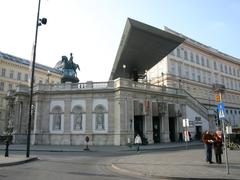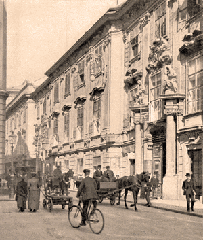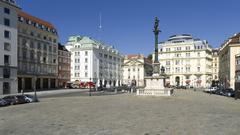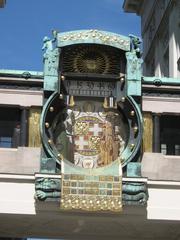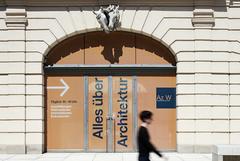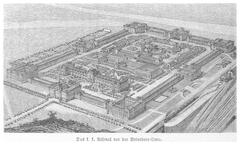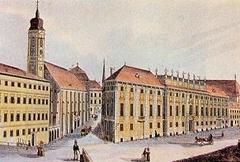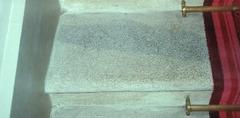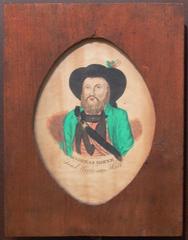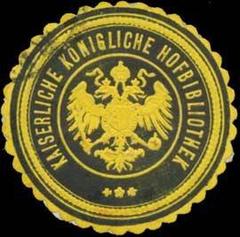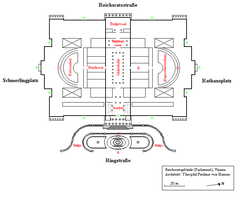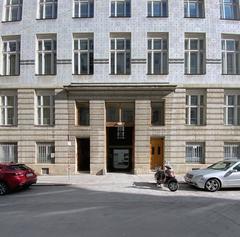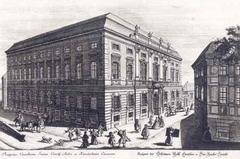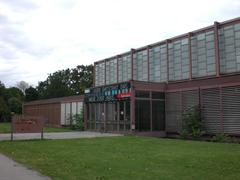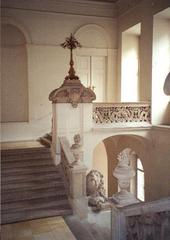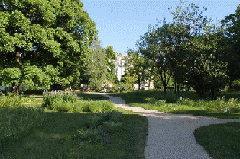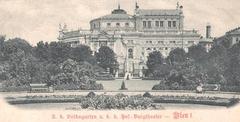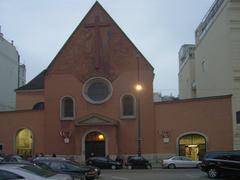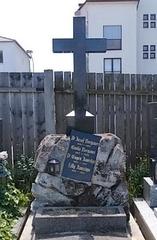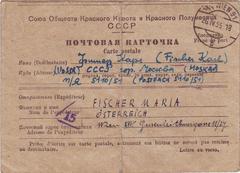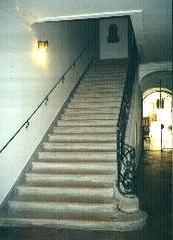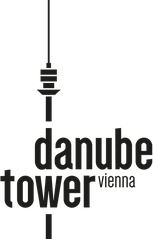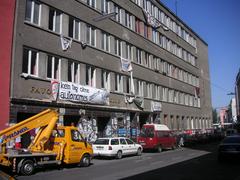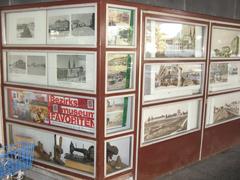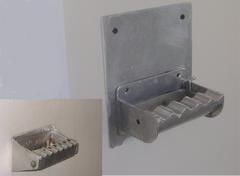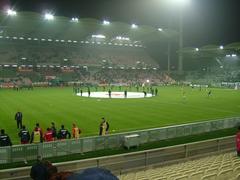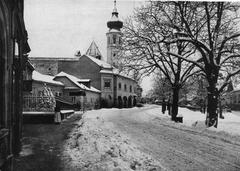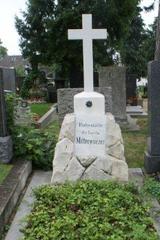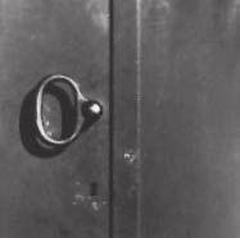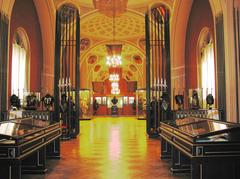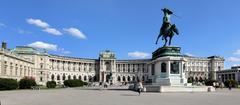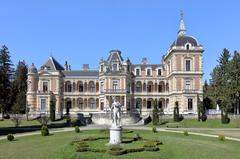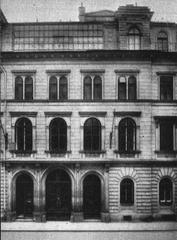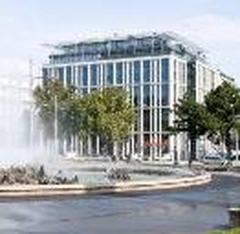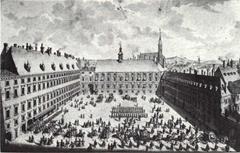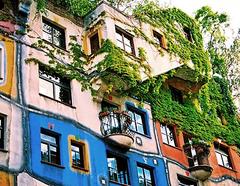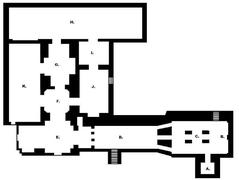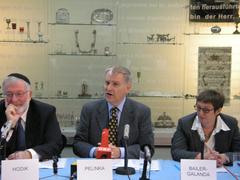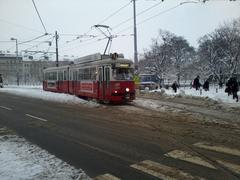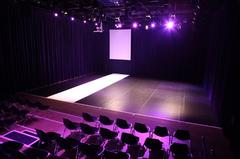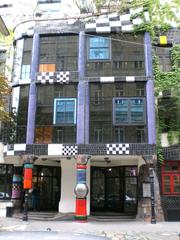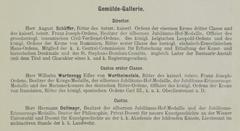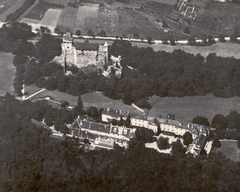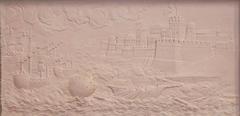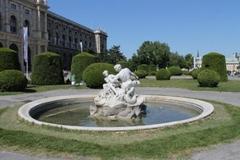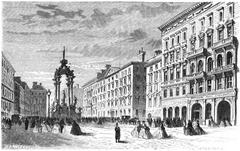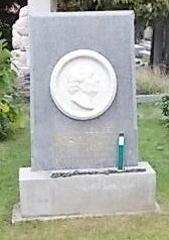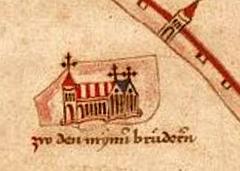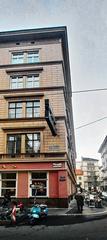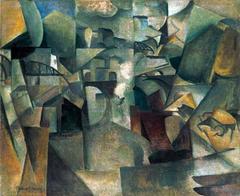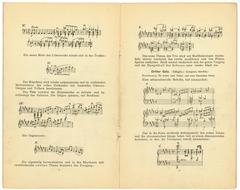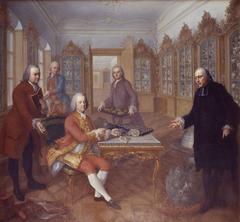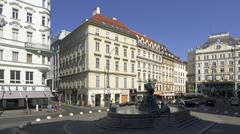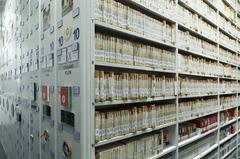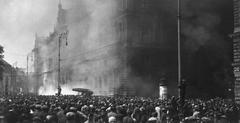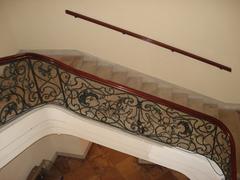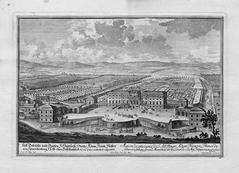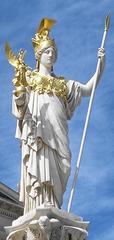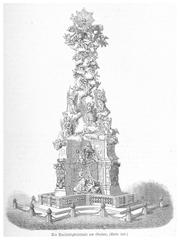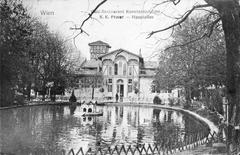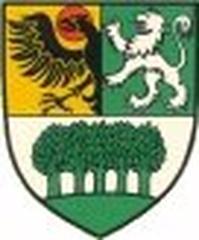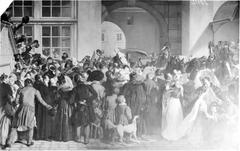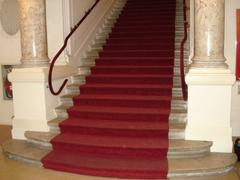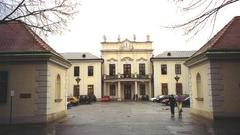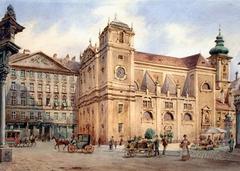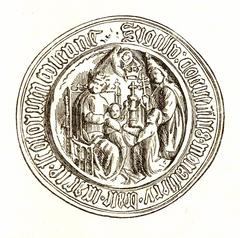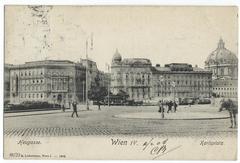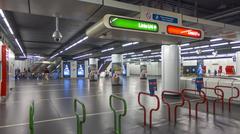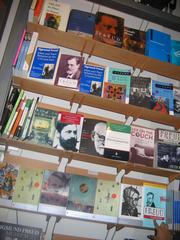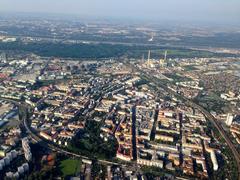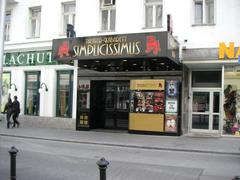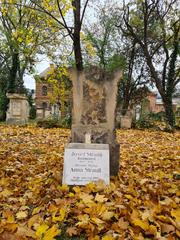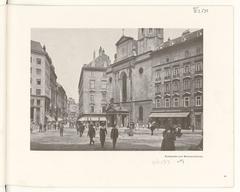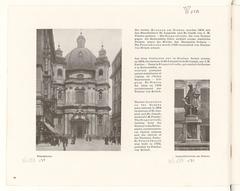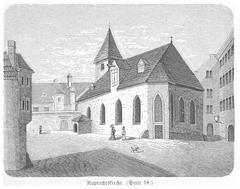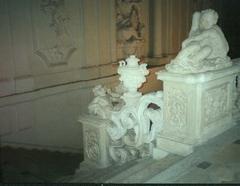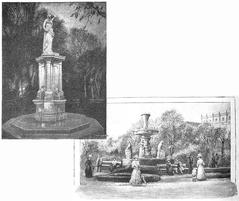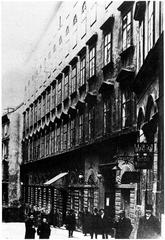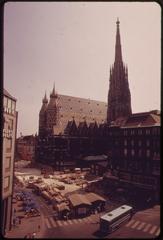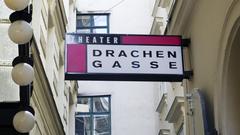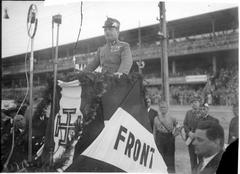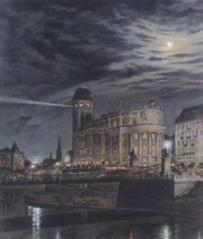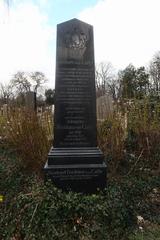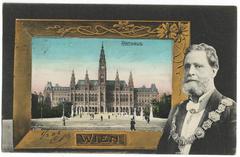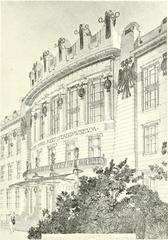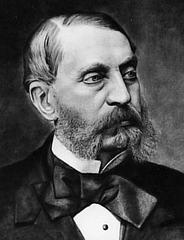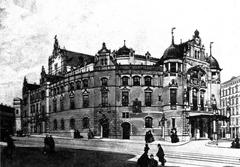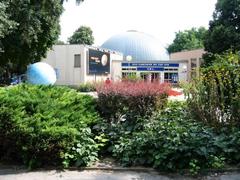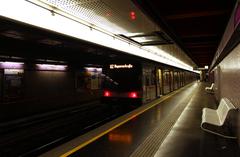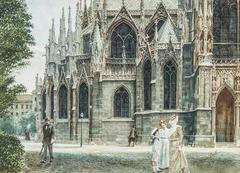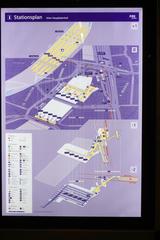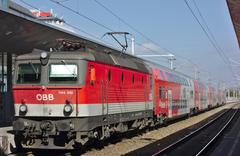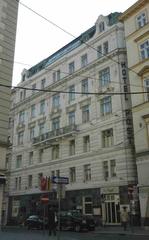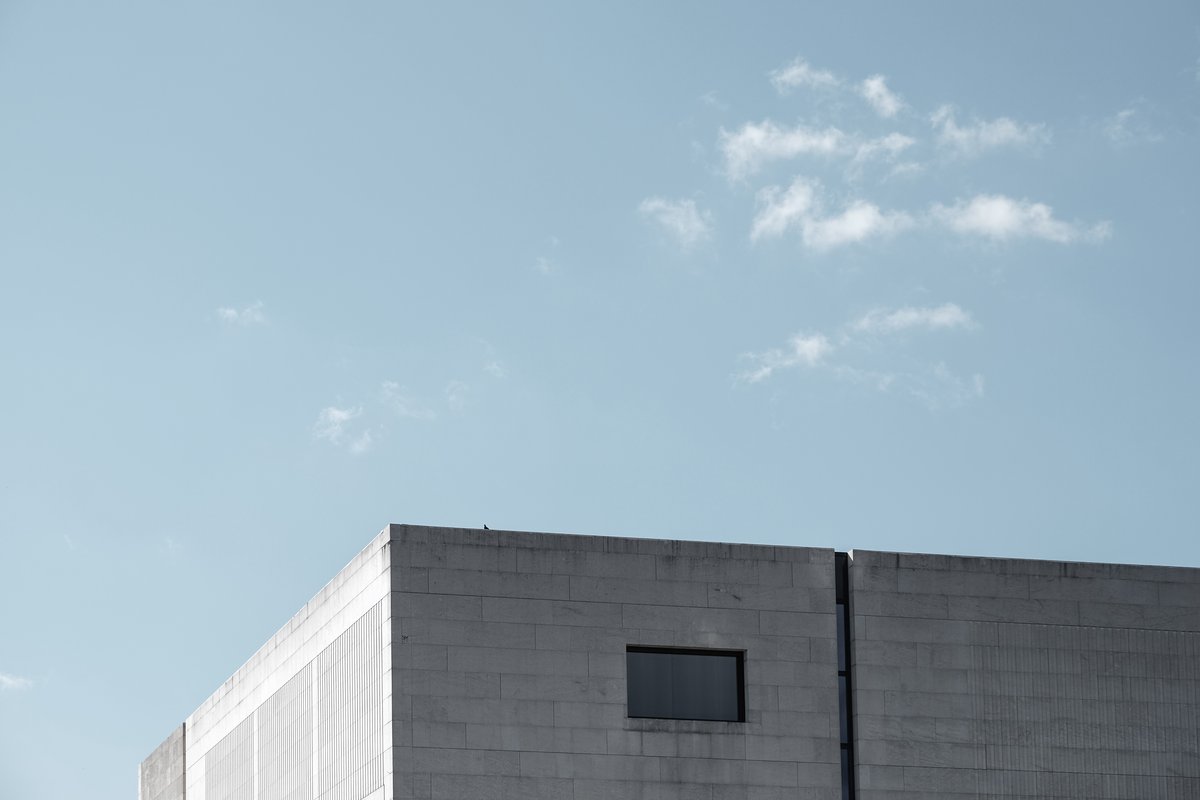
Leopold Museum Visiting Hours, Tickets, and Historical Insights
Date: 18/07/2024
Introduction to the Leopold Museum
Welcome to the Leopold Museum, a cornerstone of Vienna’s vibrant cultural landscape. Nestled in the heart of the MuseumsQuartier, the Leopold Museum is a must-visit destination for art enthusiasts and cultural explorers alike. It houses one of the most significant collections of modern Austrian art, focusing on the late 19th and early 20th centuries—an era marked by revolutionary artistic movements such as Viennese Jugendstil, Vienna 1900, and Austrian Expressionism. The museum’s inception is deeply rooted in the passion and vision of Dr. Rudolf Leopold and his wife Dr. Elisabeth Leopold, who spent over five decades amassing this extraordinary collection (Leopold Museum Vienna).
Dr. Rudolf Leopold’s journey into the world of art began in his youth and burgeoned during his student years in the 1950s. His keen eye and strategic acquisitions, particularly of works by Egon Schiele, whom he greatly admired, laid the foundation for what would become a national treasure (Explore the Leopold Museum). Over the years, the collection expanded to include masterpieces by Gustav Klimt, Oskar Kokoschka, and many other pivotal figures in Austrian art.
Officially opened in 2001, the Leopold Museum quickly gained international acclaim, offering visitors an unparalleled journey through the pivotal periods of Austrian art history. Housed in a striking example of modern architecture by Ortner & Ortner, the museum’s minimalist design, characterized by white shell limestone and expansive natural light, provides a stunning backdrop for its extensive collection (Leopold Museum Visitor Guide).
Table of Contents
- Introduction
- Museum History and Background
- Visitor Information and Services
- Highlights of the Permanent Collection
- Temporary Exhibitions
- Nearby Attractions
- Frequently Asked Questions (FAQs)
- Conclusion
Museum History and Background
The Leopold Museum stands as a testament to the vision and passion of Dr. Rudolf Leopold (1925-2010), a renowned Austrian ophthalmologist, and his wife Dr. Elisabeth Leopold. Over five decades, the couple amassed an extraordinary collection of Austrian art, primarily focusing on the period spanning the late 19th and early 20th centuries. This period, marked by groundbreaking artistic movements like Viennese Jugendstil, Vienna 1900, and Expressionism, forms the core of the museum’s collection.
Dr. Leopold’s fascination with art began in his youth and developed into a serious pursuit during his student years in the 1950s. His early acquisitions centered around the then-undervalued Expressionist works, particularly those of Egon Schiele, an artist who would become synonymous with the Leopold Museum.
As Dr. Leopold’s career flourished, so did his art collection. He strategically acquired pieces, focusing not just on renowned names but also on lesser-known artists who contributed to the vibrant tapestry of Austrian art. This approach resulted in a collection of remarkable breadth and depth, offering a comprehensive perspective on this pivotal period in Austrian art history.
In the 1990s, the idea of a public museum began to take shape. Dr. Leopold sought to ensure the long-term preservation and accessibility of his collection, a national treasure that deserved to be shared with the world. After years of planning and negotiation, the Leopold Museum Private Foundation was established in 1994. The Austrian government acquired the vast collection for an estimated €660 million, recognizing its cultural significance.
The museum found its home in the MuseumsQuartier, a sprawling cultural complex in Vienna, housed within former imperial stables. The building itself, a striking example of modern architecture, was designed by the renowned architectural firm Ortner & Ortner. Its minimalist design, characterized by white shell limestone and ample natural light, provides a stunning backdrop for the art within.
The Leopold Museum opened its doors to the public in 2001, marking a significant moment in the Austrian cultural landscape. It quickly gained international acclaim, drawing visitors eager to experience the captivating world of Austrian art that Dr. Leopold had so passionately assembled.
Visitor Information and Services
Visiting Hours
The Leopold Museum is open daily from 10:00 AM to 6:00 PM, and on Thursdays until 9:00 PM. It is closed on select holidays, so it’s advisable to check the official website before planning your visit.
Ticket Prices
- Adults: €14
- Seniors: €11
- Students: €8
- Children under 18: Free
Special discounts and group rates are available. Tickets can be purchased online or at the museum entrance.
Getting There
The Leopold Museum is located in Vienna’s MuseumsQuartier, a vibrant cultural hub.
- Address: Museumsplatz 1, 1070 Wien, Austria
Public Transportation:
- U-Bahn (Subway): Lines U2 (Museumsquartier station) or U3 (Volkstheater station)
- Tram: Lines 1, 2, or D (Burgring station)
- Bus: Line 57A (Burgring station)
Walking:
- The museum is a pleasant walk from Vienna’s city center, approximately 15-20 minutes from St. Stephen’s Cathedral.
Bicycle:
- Vienna is a bike-friendly city, and bike racks are available near the museum entrance.
Car:
- Parking is limited in the MuseumsQuartier. Consider using public transportation or parking in nearby garages.
Accessibility
The Leopold Museum is committed to accessibility for all visitors.
- Wheelchair Access: The museum is fully wheelchair accessible with ramps, elevators, and accessible restrooms.
- Audio Guides: Audio guides are available in multiple languages, including audio-descriptive guides for visually impaired visitors.
- Guided Tours: The museum offers guided tours in sign language and for visitors with special needs upon request.
Food and Drink
- Café Leopold: Located on the museum’s ground floor, Café Leopold offers a stylish setting for enjoying Austrian cuisine, coffee, and pastries. (View Café Leopold)
Shopping
- Leopold Museum Shop: The museum shop offers a curated selection of art books, design objects, prints, and souvenirs inspired by the museum’s collection.
Visitor Tips
- Plan your visit: The Leopold Museum houses a vast collection. Allow ample time to explore the highlights or focus on specific areas of interest.
- Take advantage of free guided tours: Free guided tours in English are offered daily, providing valuable insights into the museum’s collection and history.
- Visit during extended hours: The museum is open until 9:00 PM on Thursdays, offering a less crowded experience.
- Combine your visit: The Leopold Museum is located within the MuseumsQuartier, home to several other renowned museums, including the MUMOK (Museum of Modern Art) and the Kunsthalle Wien. Consider combining your visit with other cultural attractions in the area.
- Check the museum’s website: For the latest information on exhibitions, events, and visitor services, visit the official Leopold Museum website.
Group Visits
The Leopold Museum welcomes group visits and offers special rates and guided tour options for groups of 10 or more. Advance booking is required for groups.
Photography
Photography for personal use is permitted in the museum’s permanent collection galleries, except where otherwise indicated. Flash photography and the use of tripods are not allowed.
Cloakroom
A free cloakroom is available for visitors to store coats, bags, and umbrellas. Large bags and backpacks are not permitted in the exhibition galleries.
Wi-Fi
Free Wi-Fi access is available throughout the museum.
Contact Information
- Telephone: +43 1 525 40-0
- Email: [email protected]
- Website: https://www.leopoldmuseum.org/en
Highlights of the Permanent Collection
The Vienna 1900 Collection
At the heart of the Leopold Museum is the Vienna 1900 Collection, which celebrates the brilliance of Viennese Modernism. Key highlights include:
- Gustav Klimt: As one of Austria’s most celebrated artists, Klimt’s works are a major attraction. The museum boasts the world’s largest collection of his paintings, including iconic pieces like “Death and Life” and captivating portraits such as “Portrait of Maria Munk” (Source - Leopold Museum).
- Egon Schiele: Known for his raw and expressive style, Schiele’s works are both captivating and unsettling. The museum houses a significant collection of his paintings and drawings, reflecting his artistic evolution and the complexities of the human form (Source - Leopold Museum).
- Oskar Kokoschka: A prominent figure in Austrian Expressionism, Kokoschka’s works are known for their vibrant colors and emotional intensity. The museum’s collection includes notable portraits and landscapes that exemplify his unique artistic vision (Source - Leopold Museum).
Beyond the Big Three
While Klimt, Schiele, and Kokoschka are the main attractions, the Leopold Museum’s collection extends far beyond these masters. Visitors can explore works by other significant artists of the period, including:
- Richard Gerstl: A pioneer of Austrian Expressionism, Gerstl’s short but intense career produced powerful and emotionally charged works.
- Koloman Moser: A versatile artist associated with the Vienna Secession, Moser’s work encompassed graphic design, furniture, and decorative arts.
- Carl Moll: A close associate of Klimt, Moll’s paintings often depict the atmospheric beauty of Vienna and its surroundings.
Exploring Different Artistic Movements
The Leopold Museum’s collection provides a comprehensive overview of various artistic movements that flourished in Austria during this period:
- Vienna Secession: This influential movement, led by Klimt, sought to break free from traditional academic art. The museum’s collection showcases the Secession’s emphasis on decorative arts, symbolism, and the Gesamtkunstwerk (total work of art) concept.
- Austrian Expressionism: Characterized by emotional intensity, bold colors, and distorted forms, Austrian Expressionism is well-represented through the works of Schiele, Kokoschka, and Gerstl.
- Art Nouveau: This international style, known for its organic forms and decorative motifs, is reflected in the works of artists like Koloman Moser and Josef Hoffmann.
Temporary Exhibitions
In addition to its permanent collection, the Leopold Museum hosts a dynamic program of temporary exhibitions that delve deeper into specific themes, artists, or historical periods. These exhibitions often feature works on loan from other prestigious institutions, providing visitors with unique opportunities to engage with a wider range of art and ideas.
Nearby Attractions
The MuseumsQuartier itself is a hub of cultural activity, housing several other museums and galleries. Nearby attractions include:
- Kunsthistorisches Museum: A stunning art museum with an extensive collection of European masterpieces.
- Natural History Museum: Perfect for families, offering fascinating exhibits on natural history.
- Mariahilfer Straße: Vienna’s longest shopping street, ideal for a leisurely stroll and some retail therapy.
Frequently Asked Questions (FAQs)
Q: What are the Leopold Museum’s opening hours? A: The museum is open daily from 10:00 AM to 6:00 PM, and on Thursdays until 9:00 PM.
Q: How much are tickets to the Leopold Museum? A: Ticket prices are €14 for adults, €11 for seniors, €8 for students, and free for children under 18.
Q: Are guided tours available? A: Yes, the museum offers guided tours in multiple languages.
Q: Is the Leopold Museum accessible for visitors with disabilities? A: Yes, the museum is fully wheelchair accessible and offers audio guides, guided tours in sign language, and other services for visitors with special needs.
Q: Can I take photos in the Leopold Museum? A: Photography for personal use is permitted in the permanent collection galleries, except where otherwise indicated. Flash photography and the use of tripods are not allowed.
Q: What are the best ways to get to the Leopold Museum? A: The museum is easily accessible by public transportation (U-Bahn, tram, bus), and is a short walk or bike ride from Vienna’s city center. Limited parking is available nearby.
Conclusion
The Leopold Museum stands as a beacon of cultural and artistic heritage in Vienna. It is more than just a repository of art; it is a testament to the transformative power of vision and passion. The museum offers a comprehensive journey through the evolution of Austrian art, from the decorative elegance of the Viennese Jugendstil to the raw expressiveness of Austrian Expressionism. Its collections, featuring masters like Egon Schiele, Gustav Klimt, and Oskar Kokoschka, provide deep insights into the cultural and artistic shifts that shaped modern Austria (Leopold Museum Vienna).
Visitors to the Leopold Museum are not only treated to an extraordinary array of artworks but also to a well-rounded experience with its guided tours, temporary exhibitions, and visitor-friendly amenities. The museum’s location within the MuseumsQuartier allows for an enriched cultural day out, with numerous other attractions nearby, such as the Kunsthistorisches Museum and the Natural History Museum (Explore the Leopold Museum). Whether you are an art aficionado or a curious traveler, a visit to the Leopold Museum promises an enriching and memorable experience, making it an essential stop on any cultural itinerary in Vienna.
References
- Leopold Museum Vienna - History, Tickets, Visiting Hours & More. Retrieved from https://www.leopoldmuseum.org/en/collection/highlights/45/death-and-life
- Explore the Leopold Museum - Visiting Hours, Tickets, and Must-See Exhibits in Vienna. Retrieved from https://www.leopoldmuseum.org/en/collection/artists/12/egon-schiele
- Leopold Museum Visitor Guide - Hours, Tickets, and Essential Tips. Retrieved from https://www.leopoldmuseum.org/en/visit/admission-fees



